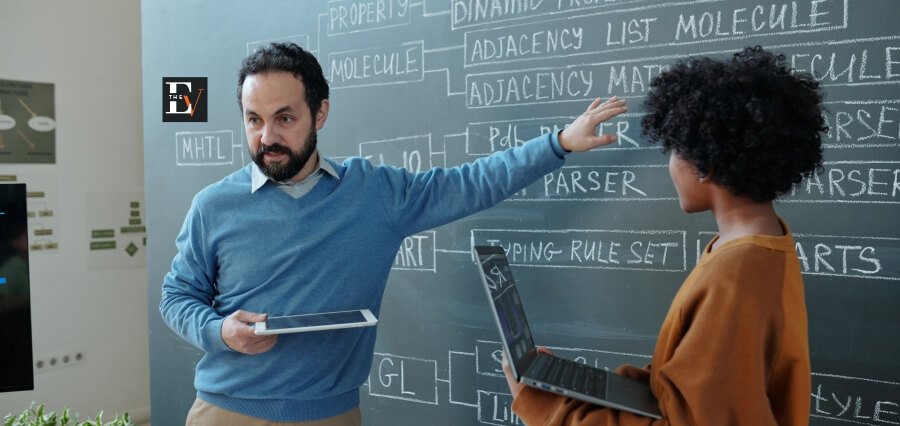From Policy to Practice
Education is about helping people get interested, pick up new skills, and become the kind of people who will make a difference in the future, not just about sharing information. Across the world, educational leadership is really important for creating and keeping good learning spaces. When decisions are made clearly, with understanding and looking ahead, they can help students learn better and make institutions grow and be able to change with the times.
Cultivating Purpose-Driven Systems
Global education leadership starts from being really clear about why it matters, to help set up ways that make students, teachers, and schools feel supported and able to keep growing over time. This purpose doesn’t come from formal rules, but from having everyone talk things out together, which means teachers, people who make decisions, families, and students all share their ideas. Such collaboration helps create teaching systems that can handle the different needs of students from all around the world and from different cultures.
These systems are set up so that they can change over time while still making sure that key values like critical thinking, creativity, understanding others, and using what you learn in real life stay important throughout. When leaders focus on a goal that is beyond just numbers and results, it helps build a learning environment where people help each other and work together because they care about the success of the group.
Driving Innovation Through Global Perspectives
Leadership across borders helps connect different ideas that might normally stay separated. Exposure to different ways of teaching and school systems gives leaders more ideas about what is successful and helps them understand why it works. This exchange helps people be more creative and leads them to think about changing the usual ways of doing things.
By drawing ideas from different backgrounds, leaders can help the institutions look for ways to do more than just what most people expect. Whether it’s trying new ways of learning, bringing together different subjects, or making it easier for students to use technology, working together across countries helps schools change in ways that really matter and are important.
Building Resilient Educators and Institutions
A strong learning ecosystem relies a lot on the quality of the teachers. When teachers feel appreciated and helped out by others, they are able to do a better job by inspiring and helping their students. Education leaders help make these things possible by giving teachers new training, supporting various ways of teaching in the classroom, and recognising all the good acts each educator does.
Additionally, companies that have understanding and clear leadership tend to bounce back better when things get tough. They are better able to deal with things that can suddenly change, like new technology, changes in society, or public health problems. This readiness comes not only from the tools and materials at hand, but also from people being ready to adjust and learn new things together.
Prioritizing Equity and Access
True transformation in education happens when every student is given the same chance to get a good education. Global leadership needs to solve problems that groups that have less often face, like not having enough resources, missing facilities in some areas, and unfair ideas about what children learn in school.
This means it’s about much more than giving money or stuff. It calls for thinking about new ways to teach, changing the kinds of tests students take, and getting more input from the community about what is important in education. When equity is a main focus, schools and learning environments can turn into places where everyone, no matter where they come from, gets a real chance to do well.
Reimagining Student-Centered Learning
In transformative ecosystems, students are not those who sit back and relax, but they actively participate in their learning process. Leadership is about taking feedback from students, actually listening to what they want to say, and getting their input helps set students up to keep learning new things all their lives.
Global education leaders know that students today need more than just knowing facts and information. They need to be able to adjust, understand feelings, feel comfortable with technology, and be involved in their communities. A student-centered approach moves the focus away from rote learning to helping students actually participate and learn how and what they’re studying and how it matters in daily life.
Strengthening Collaboration Across Borders
The key to transformation is collaboration. When leaders from different parts of the world share experiences and knowledge, they join forces to accomplish a bigger objective. improving education for all. They can be implemented as international meetings, research projects, teacher swaps, or exchanges of views on education policies.
Together these efforts come up with fresh concepts and help people feel closer in handling similar issues. They prove that teaching and learning, though rooted in each community, is made stronger by cross-border interactions.
Sustaining Momentum Through Reflection and Renewal
An overnight change in any business is rarely sustainable. One must constantly try, think about the process, and review their aims as they learn new things from discoveries. When leaders promote giving and receiving feedback, they keep the ecosystem fresh and prevent it from being stagnant.
By frequently surveying teaching methods, the curriculum, and outcomes in learning, needed corrections can be made to meet the system’s overall aims. Those who value change management create environments that continue to provide value as time goes by.
A Call to Lead Change
Global education leaders have the potential to make a difference in many classrooms and across an entire society. By inspiring the same goal, helping to invent new ways of learning, and giving priority to equity, it transforms the way education takes place.
If educating people for the future is something that you love, then now is the time to act. Join together, be involved, and take charge, since all learners deserve success in learning.





